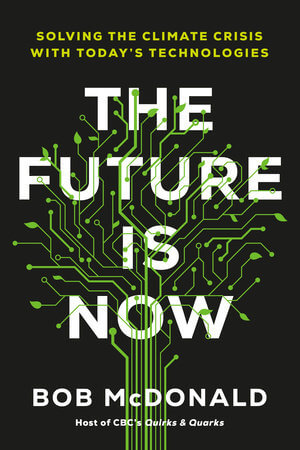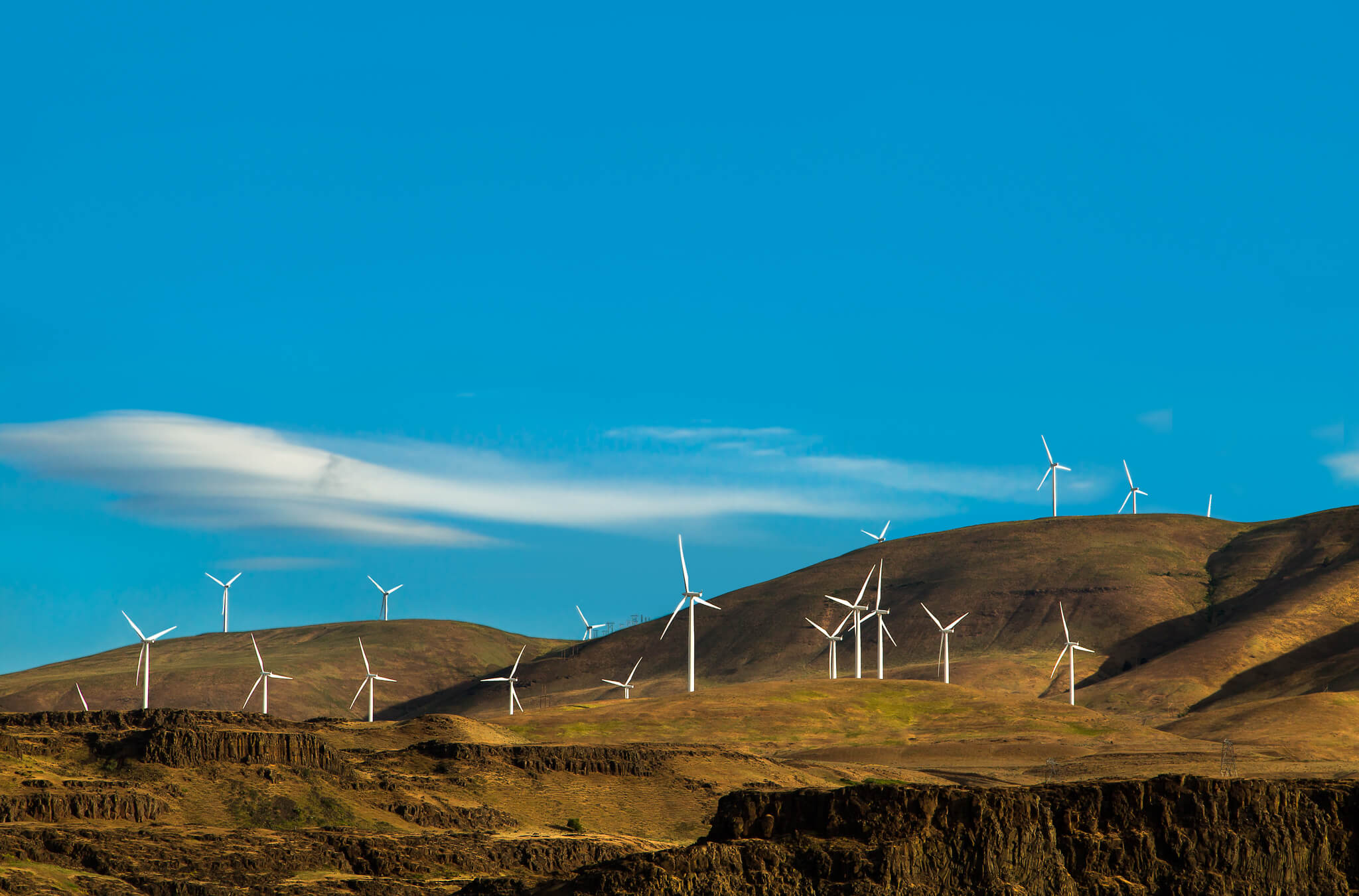The astounding aspect of green energy technology is the fact that it all exists today, most of it has been around for decades. No new inventions are required to go green. But implementing alternative technologies on a large scale and truly decarbonizing our atmosphere to prevent further climate change will take more than scientific expertise and technical skill. It will require political will, economic investment, and public acceptance. In other words, the science and technology are only half of the equation.
Moving away from fossil fuels does not mean giving up our comfortable modern lifestyle and moving back to the caves. It is a matter of subtly changing our attitudes towards energy: where it comes from and how we use it.
Our civilization has learned to adapt to environmental threats many times in the past. In 1952, the London smog brought about the first clean air act and incentives to move away from open burning of coal to cleaner technologies. The oil embargo of 1973 taught us about fuel efficiency. Brown smog over California prompted that state government to impose the strictest emission standards for vehicles, forcing the automotive industry to install catalytic converters on exhaust systems. In all cases, life in the cities went on, but the skies above were clearer.
Government incentives and environmental laws are powerful tools to promote change. Higher taxes on carbon and support for alternatives, rewriting of building codes to include more electrification, and installation of ground piping that can be used by heat pumps before the foundations are poured are driving a fundamental change in how cities evolve. But regulations can go further. Requiring commercial and residential construction to incorporate passive solar into their design to transform the little square-box houses currently sprawling across the land into buildings that are energy savers and even energy producers. Restricting personal car use in cities and, eventually, only allowing zero-emission vehicles on the streets will reduce our carbon footprint. Making these requirements law will allow cities to evolve into more pedestrian friendly places, with local services easily available, less reliance on personally owned vehicles, and greater use of regular, fast, safe public transit.
As a kid, I watched The Jetsons, a fanciful cartoon series set in the year 2062, where everything was in the sky. Flying cars zipped between buildings held up on high towers, while gadgets of every type made life more convenient. Some, such as video calling, actually came true. But this vision, along with earlier ones from Walt Disney and his “World of Tomorrow,” have not panned out in such dramatic idyllic ways. Cities today still look like cities of the past, where people live, work, and play at ground level. But there has been a subtle evolution in technology. While cars still look like cars, now the gas tank is being replaced with a battery pack or fuel cell and the engine under the hood is an electric motor. Telephones used to be on the wall, now they are in your pocket. Our lifestyle change has not been nearly as dramatic as predicted, even though we have adopted remarkable new technology.
That is how change comes about: a slow evolution of technology that improves on what was there before rather than abandoning the old entirely and starting over with a new vision. And people love to embrace new technology.
Take, for example, how listening to music has evolved. Before 1878, the only way to enjoy music was to hear it live. But then Thomas Edison invented the phonograph that could record music on a spinning cylinder using a needle. The first version used tin foil as the surface to record, but it wore out quickly. Later he developed wax cylinders which were replaced with longer-lasting plastic versions that resembled black toilet-paper rolls and contained about two minutes of music. From that point on, professional music could be enjoyed at home. But these cylindrical shapes took up a lot of space when stored, so they evolved into flat discs, with one song on each side, that could be stacked more easily. Those grew into larger vinyl albums holding about an hour of music, then reel-to-reel tape came along so you could record your own music off the radio or try your hand at performing and recording yourself. The first tape machines were the size of small suitcases, but eventually shrank down to cassette players that fit in your hand or into the dashboard of a car. The next development in sound was the CD, which used laser light instead of needles to read optical discs, producing ultra-clean sound with no hiss or pop. Then came the MP3 player, which was just a computer chip with no moving parts, which evolved into the iPod—and today, you can store all the music you want on your phone and hear it through noise-cancelling earbuds. All that technological evolution was just to listen to music.

We have not seen that kind of evolution with energy technology because fossil fuels have been convenient, abundant, and versatile. We have built up an enormous infrastructure to keep those fuels flowing and an even larger system of technologies that burn them. Now is the time to evolve that technology into cleaner versions.
Our energy future will be a montage of different sources. The electricity running through your home may come from a local wind farm, solar panels laid across a field or on your roof, your garbage, the ground under your floor, a local small nuclear plant or new fusion reactor, tides flowing past your coastline, waves crashing on a local beach, or, more likely, a combination of many.
The beauty of clean energy is that it not only is better for the climate but also actually makes money. New jobs are emerging through start-up companies that are developing better batteries, more efficient solar cells, and larger, more powerful wind turbines as well as through the construction and maintenance requirements to get the equipment up and running reliably. Then there are the savings. As the cost of fossil fuels continues to rise, the cost of alternatives is going down. Solar electricity in many countries is now cheaper than coal so there are benefits in the long term.
There is a danger that as the cost of alternative energy comes down and more of it enters the market, the value of that energy goes down as well. It will take creative management to store excess energy when the value is low and sell it at a profit when demand rises.
The change to a new energy portfolio will come with resistance from those invested in the old ways of doing things, but rather than focus on jobs lost, there are new opportunities to be gained as the technology becomes integrated into our way of life. New products will come along, such as cheaper, more energy-dense batteries; new industries will appear, such as battery recycling to recover precious metals, the way platinum is retrieved from catalytic converters on old cars.
In the same way that fossil fuels are concentrated in certain areas around the world, such as Texas, Alberta, Venezuela, and the Middle East, so too are the alternatives. Mountain tops and flat areas have stronger prevailing winds, while deserts receive more sun. Only certain coastlines have the right shape of bays or configuration of offshore islands to produce strong tidal currents. Sub-tropical areas are best for producing fast-growing trees. It will be up to individual areas to decide which form of energy production is best suited to their needs and resources. A lot of that energy will be distributed through smart grids, but a lot will be produced locally, freeing countries from their dependence on imported fuel.
We are in a new industrial revolution.
Excerpted from The Future is Now by Bob McDonald, published by Viking Canada. Copyright © 2022 Bob McDonald. Reprinted courtesy of Viking Canada. All rights reserved.
Author Bob McDonald (the host of CBC’s Quirks and Quarks) will discuss his new book with Corporate Knights managing editor Adria Vasil at Toronto Reference Library’s Appel Salon space on October 11.







